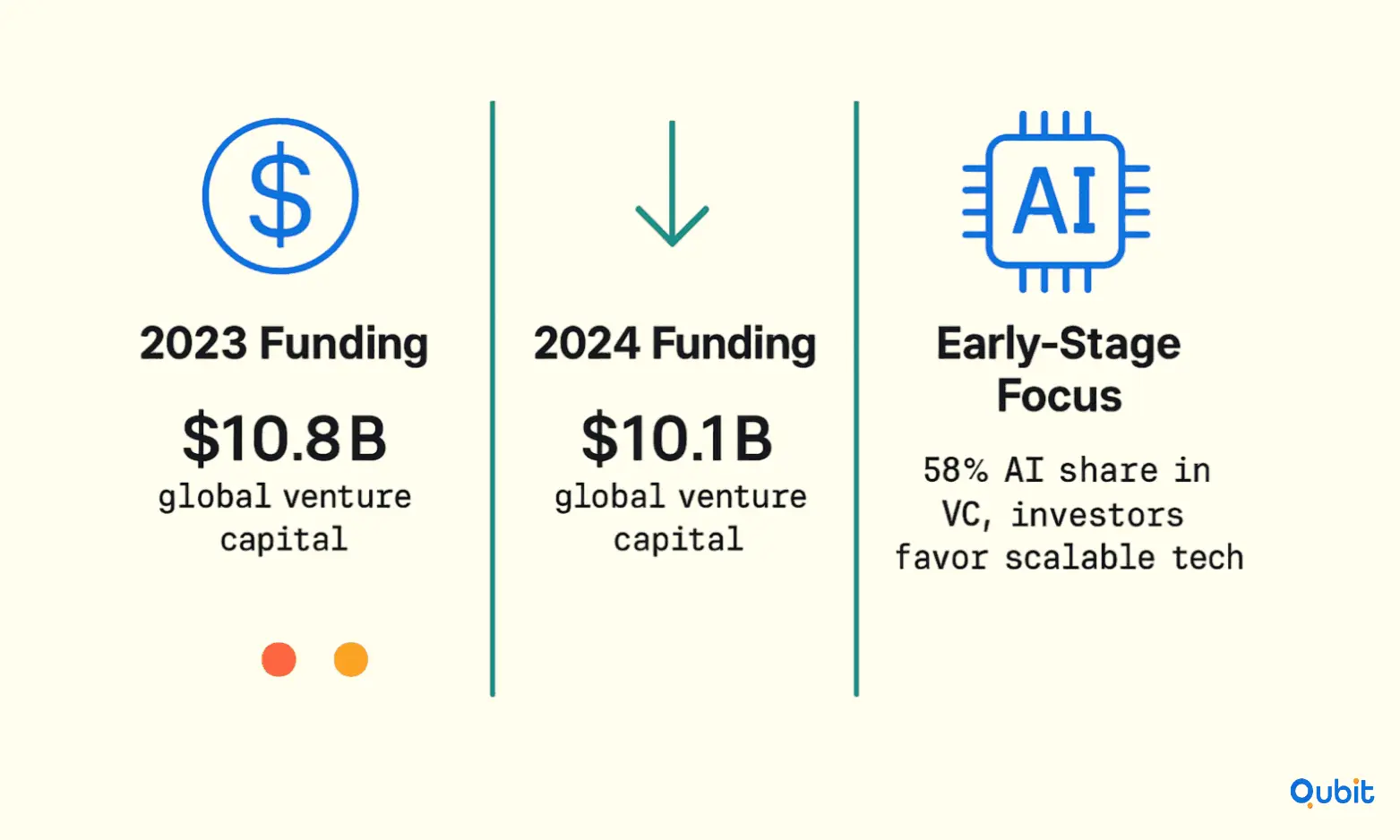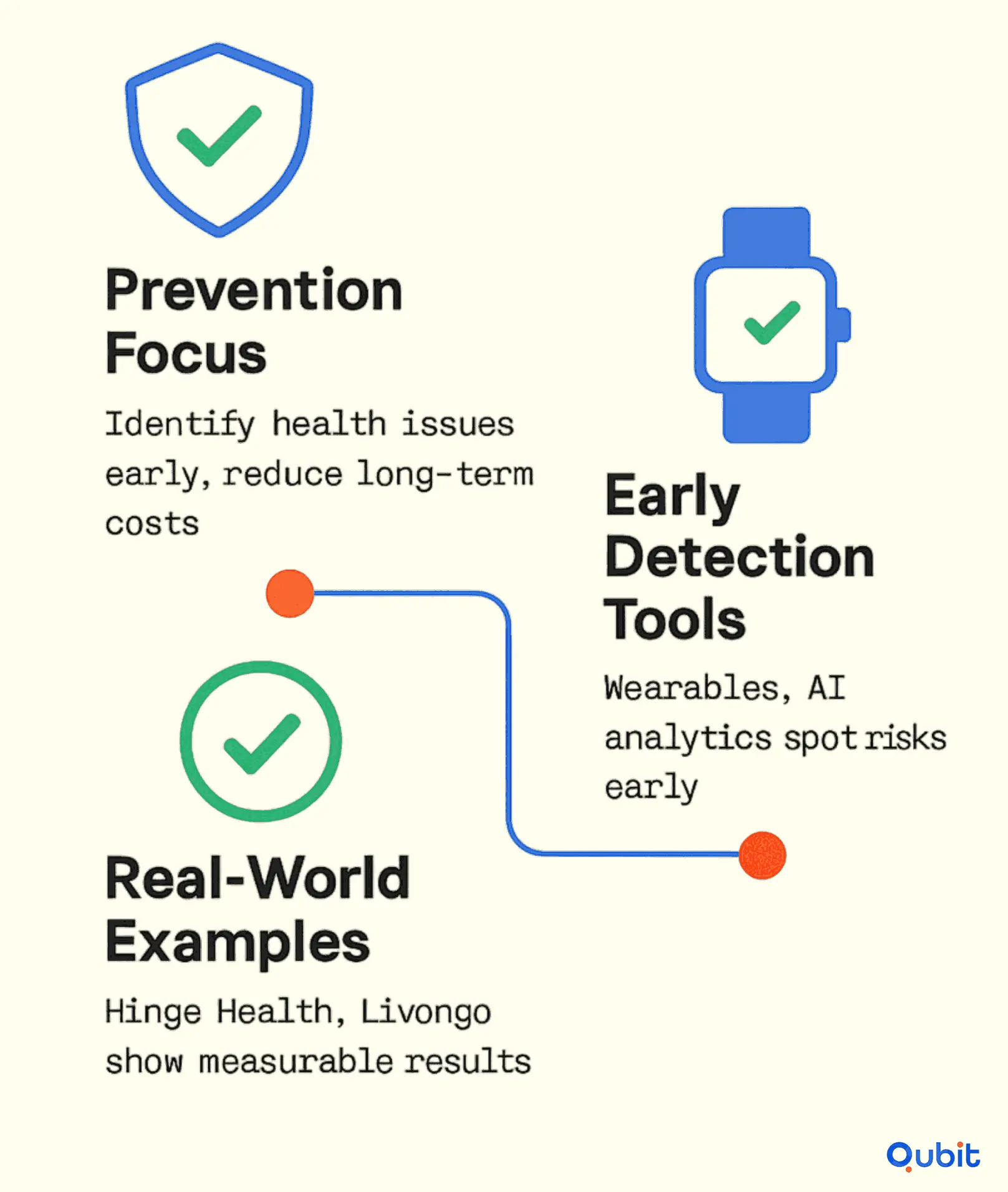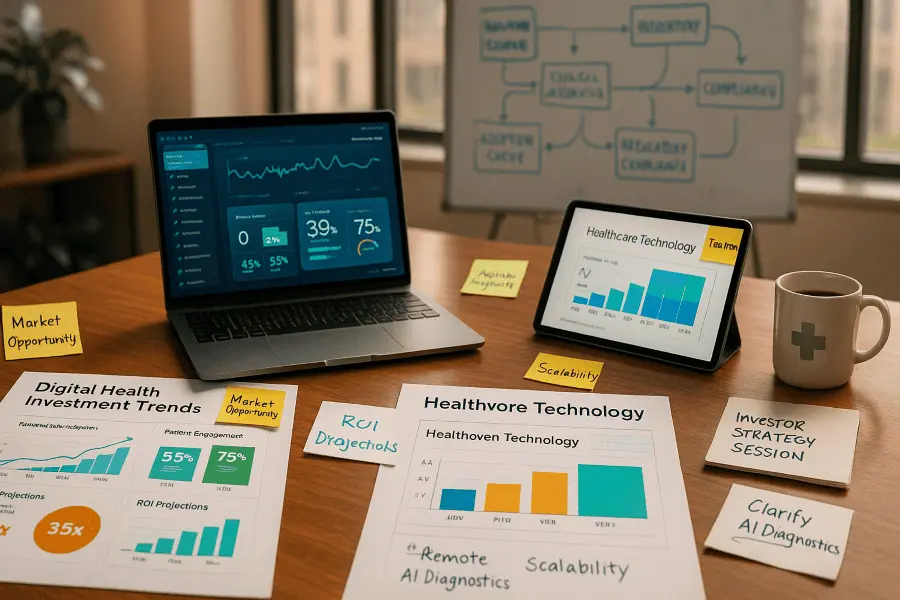The intersection of healthcare and technology is transforming the way investments are made in the industry. Digital health technology, with its innovative solutions, is reshaping patient care, streamlining operations, and creating new opportunities for growth. From telemedicine platforms to wearable health devices, these advancements are not only improving outcomes but also attracting significant financial backing.
The comprehensive perspective in how to secure funding for healthcare startups provides a foundational context that enriches your exploration of digital health technology investments. This surge in healthcare investments highlights the growing confidence in technology-driven solutions to address critical challenges.
In this blog, we’ll explore the driving forces behind these investments, analyze emerging trends, and provide actionable strategies for stakeholders. Let’s get started!
Digital Health Investment Outlook 2025: Trends and Projections
The digital health sector continues to evolve, with investment trends reflecting both challenges and opportunities. While 2024 saw a cooling in venture capital activity, the sector remains a cornerstone of innovation in healthcare. Global digital health funding reached $25.1 billion in 2024, showcasing its resilience despite a slight decline from previous years. Notably, the United States accounted for 70% of this funding, with a 4% uptick in early-stage investments, signaling a shift in investor focus toward emerging startups and groundbreaking technologies.

2024: A Year of Adjustments in Digital Health Funding
The year 2024 marked a recalibration in digital health venture capital. Total funding levels, while significant, reflected a tempered enthusiasm compared to the record highs of prior years. For instance, digital health venture funding hit $10.1 billion in 2024, a slight dip from $10.8 billion in 2023. This adjustment underscores a more cautious approach among investors, as highlighted in the HSBC report on health tech venture capital, which described the market as a "mixed bag" of optimism and caution.
Despite this moderation, the focus on early-stage investments has grown. Investors are increasingly prioritizing startups with scalable solutions, particularly in areas like artificial intelligence (AI) and TechBio. AI alone captured 58% of total digital health venture funding in 2024, as noted in Galen Growth’s analysis. This trend highlights the sector's pivot toward technologies that promise transformative impacts on healthcare delivery and outcomes.
Regional Highlights and Global Trends
The United States continues to dominate the digital health investment landscape, contributing the lion's share of funding. However, other regions are also making strides. Europe, for example, secured $701 million in AI-related digital health funding in 2024, reflecting growing interest in region-specific innovations. Globally, the $25.1 billion in funding underscores the sector's broad appeal and the diverse opportunities it presents for investors.
Emerging markets are also gaining traction, with startups in Asia and Latin America attracting attention for their localized solutions to healthcare challenges. These regions are expected to play a more significant role in the coming years, as highlighted in the BVP State of Health Tech 2024, which provides a comprehensive review of the health tech ecosystem.
Future Projections: What to Expect in 2025
Looking ahead, 2025 is poised to be a pivotal year for digital health investments. Key technologies such as AI-driven diagnostics, remote patient monitoring, and personalized medicine are expected to attract substantial funding. According to the Technologies to Watch in 2025, innovations like wearable biosensors and blockchain for healthcare data security are set to redefine the sector.
Additionally, the shift toward early-stage funding is likely to continue, with investors seeking to capitalize on the next wave of disruptive technologies. This trend aligns with the broader movement toward sustainable and scalable healthcare solutions, as evidenced by the growing interest in telehealth and digital therapeutics. For a deeper dive into telehealth's role in this evolution, explore the telehealth funding outlook.
Proactive Care Strategies & Early Detection: Shifting from Reactive to Preventive
The healthcare industry is undergoing a transformative shift, with proactive care models gaining traction over traditional reactive approaches. By emphasizing early detection and direct-to-consumer healthcare solutions, these strategies aim to improve patient outcomes while reducing long-term costs.

The Rise of Proactive Care Models
Proactive care models prioritize prevention over treatment, focusing on identifying potential health issues before they escalate. This approach is becoming increasingly popular, driven by advancements in digital health platforms and a cultural shift toward personalized care. For example, digital solutions now offer tools for continuous monitoring, empowering individuals to take charge of their health.
The surge in preventive solutions is evident across various sectors, including chronic disease management and musculoskeletal health. Companies like Hinge Health and Livongo have demonstrated how early detection strategies can deliver measurable results, improving both patient satisfaction and financial outcomes.
Regional and Demographic Drivers
- North America leads the market, but Europe is rapidly expanding due to aging demographics, government initiatives, and technological adoption.
- Emerging markets are leveraging digital health to overcome infrastructure gaps and improve access to care.
- Chronic disease prevalence and rising healthcare costs globally are accelerating the adoption of these technologies
Early Detection Strategies in Action
Early detection strategies are at the heart of proactive care models. These methods utilize advanced technologies, such as wearable devices and AI-driven analytics, to identify health risks in their nascent stages. By catching issues early, patients can avoid costly interventions and enjoy better health outcomes.
Case Study: Hinge Health
Hinge Health exemplifies the power of proactive care in musculoskeletal health. With over 1 million patients enrolled in its digital therapeutic intervention program, the company boasts a 90% satisfaction rate as of 2025. This success stems from its focus on early detection and personalized care plans, which help users address pain and mobility challenges before they worsen.
Case Study: Livongo
Livongo, a digital health platform specializing in chronic disease management, highlights the financial benefits of shifting from treatment to prevention. By offering tools for continuous monitoring and personalized coaching, Livongo achieved a 17% reduction in diabetes-related medical spending in 2020. This approach not only improved patient health but also delivered measurable cost savings.
Direct-to-Consumer Healthcare: Empowering Patients
Direct-to-consumer healthcare solutions are reshaping the patient experience by making preventive care more accessible. These platforms eliminate traditional barriers, such as lengthy appointment wait times, by providing on-demand services and real-time health insights.
This model aligns with the growing demand for personalized care, allowing individuals to tailor their health management strategies to their unique needs. As investment trends continue to favor prevention-focused solutions, direct-to-consumer healthcare is poised to play a pivotal role in the future of medicine.
Connecting Proactive Care to Remote Patient Monitoring
Proactive care models often integrate remote patient monitoring to enhance early detection strategies. Focused insights on remote patient monitoring funding reveal how capital flows are supporting these innovations, enabling healthcare providers to deliver personalized, preventive solutions at scale.
Driving Efficiency Through Digital Transformation
Healthcare organizations are embracing digital transformation to overcome operational bottlenecks and enhance productivity. From automating repetitive tasks to improving data management, digital tools are reshaping the way healthcare systems function.
1. Addressing Budget Constraints and Workforce Challenges
Healthcare providers face mounting pressure to do more with less. Budget limitations and workforce shortages have created a need for solutions that maximize efficiency without compromising care quality. Digital transformation healthcare initiatives, such as AI-powered tools, offer a way forward by reducing administrative burdens and enabling staff to focus on patient-centric activities.
For example, AI agents are being deployed to automate scheduling, billing, and other routine tasks, significantly reducing the time spent on manual processes. These tools not only improve accuracy but also alleviate the workload on administrative teams, ensuring smoother operations.
2. Automating Administrative Tasks with AI
AI solutions are revolutionizing healthcare operations by automating time-consuming tasks. Tools like AI scribes are designed to assist medical staff with clinical documentation, reducing physician burnout and improving the overall efficiency of healthcare delivery.
Emerging applications of generative AI integration in clinical documentation and patient communication further demonstrate the potential for growth in this area. These technologies streamline workflows, allowing healthcare professionals to dedicate more time to direct patient care.
Overcoming Ethical and Data Governance Challenges
While AI adoption offers immense benefits, it also raises ethical and data governance concerns. Healthcare organizations must navigate issues related to patient privacy, data security, and algorithmic bias to ensure responsible implementation.
Ensuring Ethical AI Deployment
Transparency and accountability are essential when deploying AI in healthcare. Organizations must establish clear guidelines for data usage and algorithmic decision-making to maintain trust and compliance.
Strengthening Data Governance
Robust data governance frameworks are critical for safeguarding sensitive health information. By prioritizing interoperability and secure data-sharing practices, healthcare systems can unlock the full potential of digital transformation while mitigating risks.
For a deeper understanding of how funding opportunities can support data-sharing initiatives, explore health data interoperability funding.
Why Investors Are Bullish on Digital Health
- Scalability: Digital platforms can reach large populations quickly, making them attractive for both returns and impact.
- Cost Efficiency: Remote monitoring and AI-driven triage reduce the need for costly in-person care.
- Regulatory Support: Governments and health systems are prioritizing digital transformation, creating favorable environments for investment.
- M&A and Exit Opportunities: Robust acquisition activity signals healthy exit options for investors and founders
Conclusion
Staying ahead in the dynamic world of digital health investments requires a clear understanding of funding trends, proactive care models, and operational efficiency. By embracing these strategies, healthcare organizations can position themselves to thrive in an ever-evolving industry. Integrating innovative technologies not only enhances patient outcomes but also provides a competitive edge, making it essential for investors to prioritize forward-thinking solutions.
If you are ready to elevate your digital health investments with tailored investor connections, we at Qubit Capital offer our Investor Discovery and Mapping service. Let’s explore your opportunities together.
Key Takeaways
- Healthcare organizations prioritize operational efficiency to address budget constraints and workforce shortages.
- AI solutions, such as AI agents and AI scribes, automate administrative tasks, reducing workload and improving accuracy.
- Ethical considerations and data governance are critical for responsible AI adoption in healthcare.
- Digital transformation healthcare initiatives enhance productivity and enable staff to focus on patient care.
- Funding opportunities for health data interoperability can support secure and efficient data-sharing practices.
Frequently asked Questions
What are the latest trends in digital health investments?
Digital health investments are trending towards early-stage funding and proactive care models. In 2024, data shows a funding level of $10.1B with a global market reaching $25.1B, reflecting an evolving investor landscape.


 Back
Back



